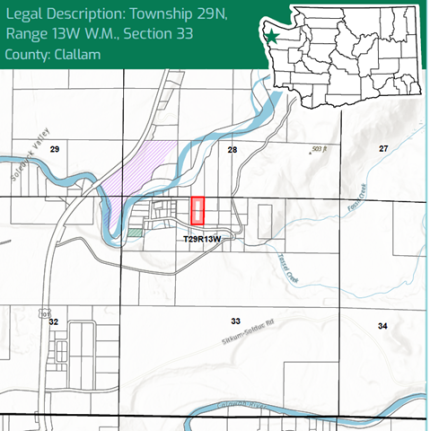
Wildlife Program report: Nov. 1-15, 2023
Providing Recreation Opportunities
Staff members are still working to finalize a Request for Proposal (RFP) for a statewide trail inventory and assessment contract. This will hopefully go up for bid in December.
Conserving Natural Landscapes
Staff members coordinated to hire a Washington Conservation Coalition crew for Okanogan Wildlife Area to help with many long-standing recreation projects. They worked with wildlife area managers to decide on a funding source for the projects.
Cowlitz Wildlife Area Planning: The planning team met with Tacoma Power for a series of field visits to discuss adaptive forest habitat management on the Cowlitz Wildlife Area. The planning team will begin development of goals and objectives for the wildlife area this winter. Staff members are developing a recreational survey for the wildlife area that will soon be available to the public. In addition, staff members are working with the University of Washington Outdoor Lab to develop both intercept surveys and a remote survey using a chatbot to gather recreational data for the 2024 field season.
L.T. Murray Wildlife Area Planning: The L.T. Murray Wildlife Area final draft plan is pending signature by the director. Both the internal and external reviews are complete. Staff members coordinated a road and trail inventory over the summer, which will be completed in 2024. The inventory is the first step in assessing the current condition of the wildlife area travel network.
Providing Education and Outreach
Staff members conducted a final debrief on the Ambassador Program with the Washington Trails Association to discuss learnings and recommendations for 2024 programming.
Staff members worked with the contracting office to put the Region 4 listening sessions contract up for bid. This will solicit input from underrepresented communities about fishing and water access area opportunities in Region 4.
Other
On Nov. 6 a news release was sent out by Washington Department of Fish and Wildlife (WDFW) inviting public comment on 20 proposed acquisition properties going through the 2023 annual cycle of Lands 20/20, consisting of approximately 13,558 acres in Chelan, Douglas, Grant, Grays Harbor, Jefferson, Kittitas, Okanogan, Pend Oreille, Skagit, Whatcom, and Yakima counties. On Nov. 8, after a preview with attending tribes, WDFW sent a letter to all federally recognized tribes with interests in Washington State inviting consultation on WDFW’s Lands 20/20 process and the 20 proposed acquisition properties going through the 2023 annual cycle of Lands 20/20.
On Nov. 9, 2023, a home on approximately five acres was acquired in Forks to provide much needed housing for WDFW’s Enforcement Program. This acquisition was exempt from Lands 20/20, approved by the Fish and Wildlife Commission on September 8, 2023 (Item B. Land Transaction) and was purchased for the appraised value of $530,000 using funding from the Enforcement Program.

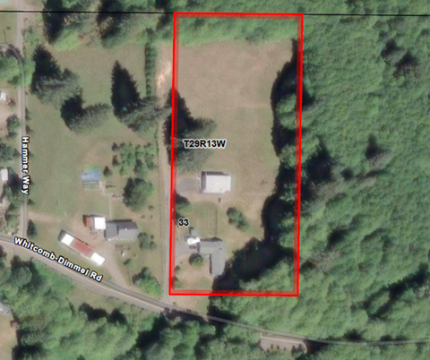

Managing Wildlife Populations
Vulcan Bighorn Sheep Survey: Wildlife Biologist Turnock conducted a ground survey for the Vulcan bighorn sheep herd. Biologist Turnock found the sheep in small groups suggesting that rut activity may be winding down.
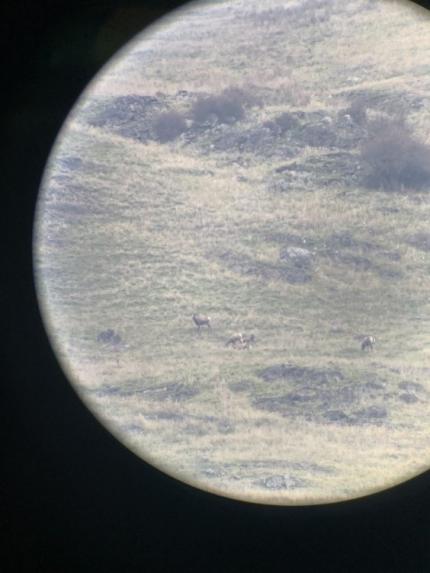
Cougar: Biologists Lowe and Brinkman joined biologists with the Kalispel Tribe’s Natural Resources Department to capture a cougar in Riverside State Park. Other participants in this capture included Sargent Leonetti, state park employees, and members of the media. The cougar was captured as part of a larger study by the Kalispel Tribe to examine the effectiveness of hazing, at reducing the habituation of cougars to human presence in highly trafficked areas (e.g., state parks).
A news article discussing this capture effort can be found here: Learning from cats: Cougar spotted at Riverside State Park now part of research project | The Spokesman-Review

Elk Retrieval: Wildlife Conflict Specialist Kolb assisted Detachment 33 officers with the retrieval of multiple elk harvested by a hunter in Walla Walla County. Officers seized one of the elk and Kolb assisted with getting the carcass donated to a local charity.
Chronic Wasting Disease (CWD): Biologist Baarstad collected CWD and tooth samples from an elk harvested by a Creston resident.
Chronic Wasting Disease Operations: Natural Resource Technician Heitstuman followed up on emails regarding improving the sample gathering process from the Department of Transportation (DOT) pits. Heitstuman collected five CWD samples from DOT pits. One sample was extremely infected. Pictures were taken and information was shared with Biologist Wik and members of the CWD team.
Private Lands Biologist Nizer worked at a chronic wasting disease (CWD) check station in Deer Park off Highway 395. The CWD check station brought in many hunters over the weekend for sampling their deer in Spokane and Stevens County.
Wolf Report: Biologist Lowe responded to a report of a possible dead wolf on I-90 near Sprague. The animal hit on the roadway turned out to be a moose calf.
Tucannon Bighorn Sheep: Wildlife Area Manager Dingman received an email from a landowner outside Pomeroy that a bighorn ram was in the area of his domestic sheep. Dingman assisted Biologist Wik in locating the ram. No one saw the ram actually in with the domestic sheep, so the ram was just hazed back into the Tucannon Valley towards the rest of the bighorn herd.
Providing Recreation Opportunities
Asotin Creek Wildlife Area Harlow Ridge Parking Area: Asotin County graciously improved WDFW’s parking area at Harlow Ridge on the Asotin Creek Wildlife Area recently. The rock came from a pit on WDFW land near Rockpile Creek where the county has been pulling rock for county road improvement projects. They hauled the rock to Harlow Ridge, spread the rock, and rolled it for a smooth surface. They also improved the county road leading to the parking area.
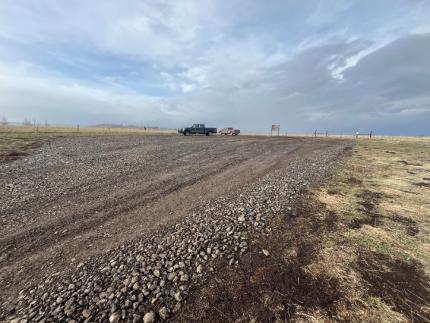
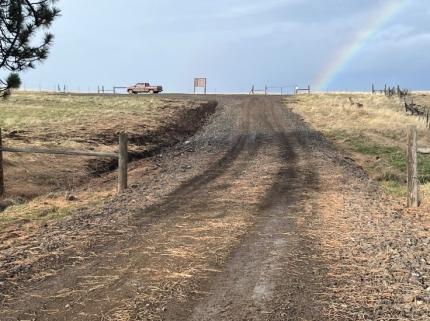
Williams Lake Access Site: This week Region 1 Access Manager Dziekan and Natural Resource Technician Brant were able to spin trim the driveway going into the Williams Lake Access Area. Most of the work was done with string trimmers, but Dziekan and Brant also got the shears and saws out to push back some of the woody debris. All the large debris was loaded in the trailer for the dump, and the grass was blown back into the ditch. Having the grass trimmed this winter will open the possibility of herbicide application next spring that will prevent the grass from growing back and requiring routine cutting.
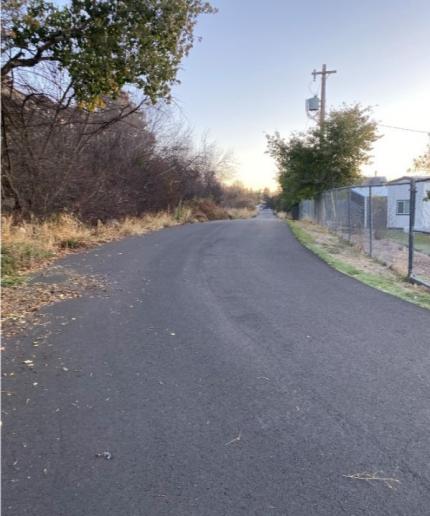
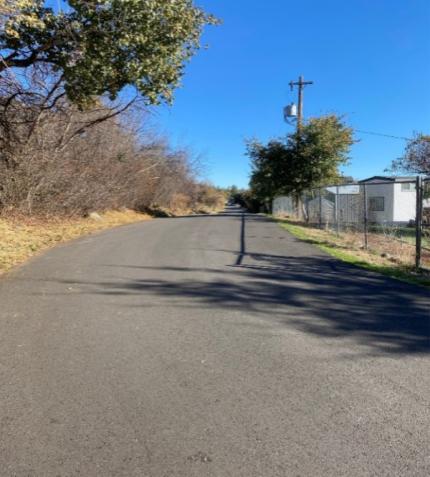
Columbia Plateau Wildlife Management Association: Private Lands Biologist Nizer spoke with Columbia Plateau Wildlife Management Association (CPWMA) President Lubey to discuss enrolling another 1,000 acres into the Hunt by Written Permission Program in addition to the landowner hunting permits. The proposed acreage will be outside of the town Tyler in GMU 130. Nizer created maps for the proposed property and submitted an amendment for the existing contract. CPWMA also talked about another landowner interested in joining and providing another 1,200 acres into Hunt by Written Permission Program too. Nizer will follow up with CPWMA and the landowner to discuss the process.
Pheasant Release: Wildlife Area Assistant Manager Palmer met with Private Lands Biologist Baarstad on Thursday morning to take delivery of pheasants for release at Sherman Creek that afternoon. The periodic fall releases provide pheasant hunting opportunities in northeast Washington; this one was timed to coincide with Veteran’s Day weekend.
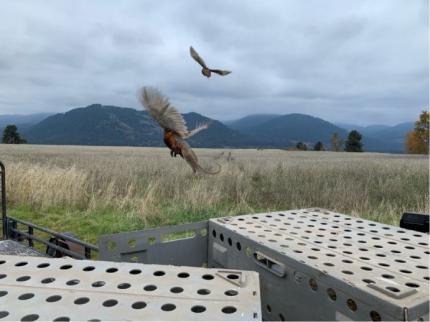
Providing Conflict Prevention and Education
Swan Lake Wolf Activity: Wildlife Conflict Specialist Harris talked with U.S. Forest Service (USFS) staff members regarding wolf activity at the Swan Lake Campground. USFS staff members reported that the campground is closed for the winter and there have been no recent wolf sightings.
Asotin County Elk Meeting: Wildlife Conflict Specialist Wade, Natural Resource Technician Heitstuman, and District Biologist Wik attended a meeting with Asotin County producers to discuss elk populations, tag allocations, and damage issues. Wade answered questions regarding commercial crop damage and the use of damage/kill permits. Wik discussed antlered and antlerless tag allocations and possible changes to the number of tags available. Producers were in favor of increasing the number of branch bull tags in the area to address large herds of bulls causing commercial crop damage.
Blue Mountains Elk Fence Maintenance: Wildlife area staff members spent the short week going over and making repairs to the elk fence from Mountain Road east. They checked and repaired the middle section of fence. There were several trees on the fence and some sections of wire had to be replaced. Additionally, a one-way gate was found disassembled and wide open for animals to pass through. Access Area Manager Heimgartner and Technician Nielsen assisted on Tuesday. Staff members began working on repairs at the Weatherly Unit and found extensive damage from tree strikes. Overall, the fence is showing its age. Many rotten posts were discovered and brush growing in and along the wire is extensive.
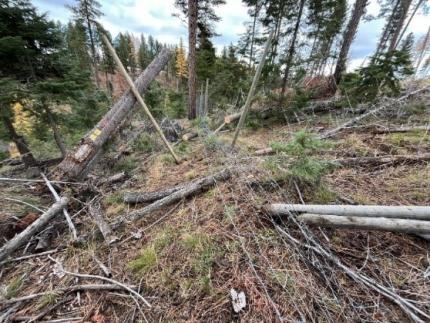
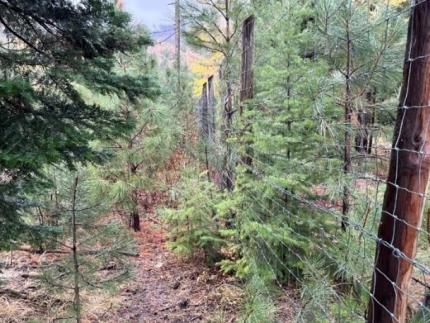
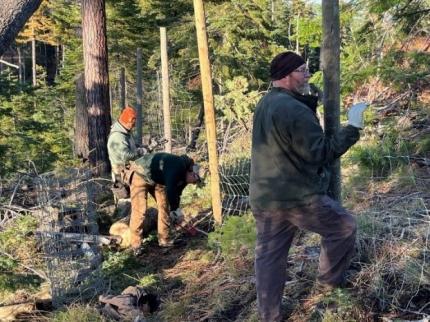

Conserving Natural Landscapes
Conservation Reserve Enhancement Program: Private Lands Biologist Nizer mowed a couple acres of Conservation Reserve Enhancement Program habitat projects to prepare for a fall seeding of native grasses. Seeding will take place most likely the week of Nov. 13 as time allows.
Habitat Work: Private Lands Biologist Hadley met with Walla Walla Conservation District members to discuss potential projects including old fence removal and shrub plantings. Private Lands Biologist Hadley worked with Pheasants Forever members to weed the holes in mulch mats in preparation of fall shrub plantings.
Swegle Unit – Noxious Weed Control: Wildlife Area Manager Dingman, Natural Resource Technicians Tritt and Jensen met Access Technicians Heimgartner and Nielsen at the Stovall Field on the Swegle Unit of the W.T. Wooten Wildlife Area. They worked on mowing kochia and Russian thistle skeletons, piling them, and hauling them to the landfill in the dump trailer. They hauled a total of seven loads. They raked the area where the weed skeletons were to clear the debris from the soil. Then they planted the area with Great Basin wildrye and a triticale cover crop. They hope the triticale will out-compete the kochia and Russian thistle and give the wildrye a chance to get established again.
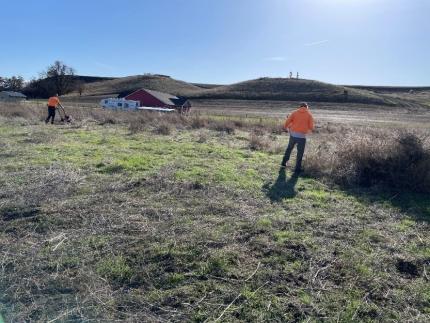

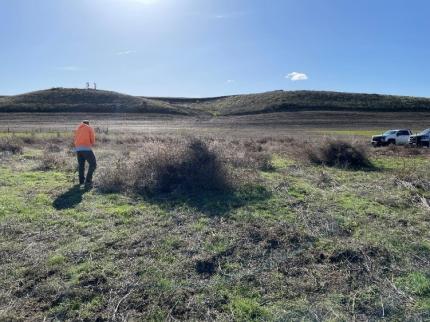

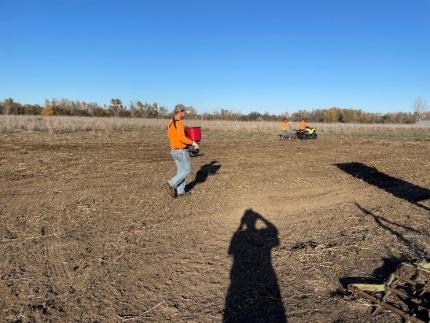
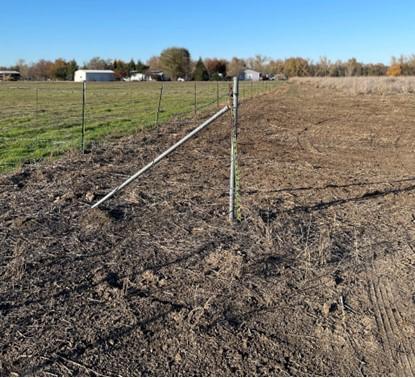
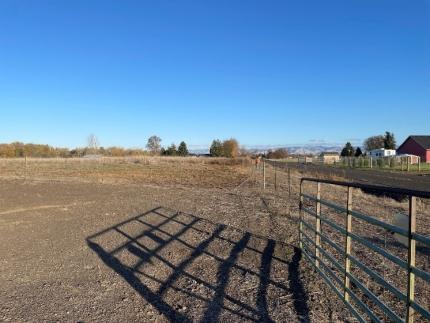
Providing Education and Outreach
Question of the Week: Acting Wildlife Conflict Specialist Harris recorded a segment on elk and deer haystack damage for Question of the Week.
Cattlemen’s Presentation: Wildlife Conflict Specialist Kolb and Wolf Biologist Spence gave a presentation to the Columbia County Cattlemen’s Association. The presentation covered general wolf biology, blue mountain specific wolf activity, and wolf-livestock protocol topics. Wildlife Conflict Supervisor McCanna was also in attendance and assisted in answering numerous questions from producers following the presentation.
Hunter Education Coordination: Wildlife Conflict Specialist Kolb submitted resupply requests and scheduled a plaque presentation for one of the local community sponsors of the Hunter Education Field Day evaluations.
Chronic Wasting Disease Presentation: Acting Private Lands Biologist Nizer presented a talk on chronic wasting disease and what it is. The presentation was put on by the Palouse Conservation Districts webinar talk series. The presentation was about 45 minutes and was presented to folks who live in the Palouse.
Managing Wildlife Populations
Fisher Studies: A collaborative team of biologists, staff members from several agencies, and staff members from non-governmental agencies including Washington Department of Fish and Wildlife (WDFW), U.S Forest Service (USFS), and Conservation Northwest finished deploying approximately 30 baited camera stations for fisher surveys within Chelan County.
As mentioned in a previous report, images collected at these baited camera traps will be used to help evaluate the effectiveness of the reintroduction of fishers back into the Cascades fisher recovery area. These studies will also inform future recovery actions by assessing the expansion and distribution of fishers.
In addition to fisher, the baited camera stations are likely to capture images of other carnivore species of concern, as well, including gray wolf, wolverine, and lynx. All data generated from these baited camera stations will be instrumental in learning more about the distribution of fishers and other carnivore species throughout The Cascades.
These camera stations were deployed in randomly selected forested areas throughout Chelan County from North Cascades National Park to Mission Ridge and everywhere in between. Stations will remain in place throughout the winter and early spring. All stations will be removed in the spring and summer of 2024 and SD cards will be retrieved for photo analysis.

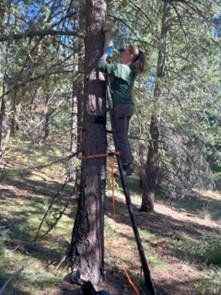

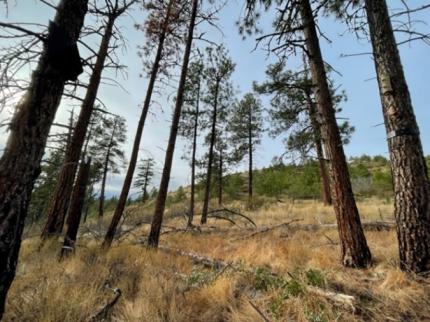

Ring-necked Pheasants: Biologist Eilers, Natural Resource Technicians Zabreznik and Schannauer, and Customer Service Specialist Mason released ring-necked pheasants in Swakane and Chelan Butte wildlife areas. As part of the Eastern Washington Pheasant Enhancement Program, rooster pheasants are released in these wildlife areas and others across central and eastern Washington to increase hunt opportunity for upland game bird hunters.

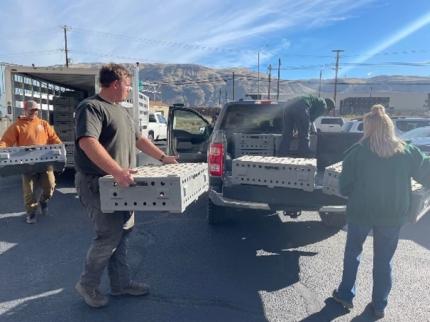
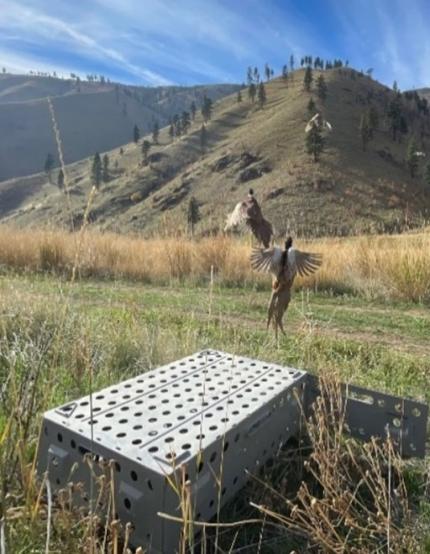
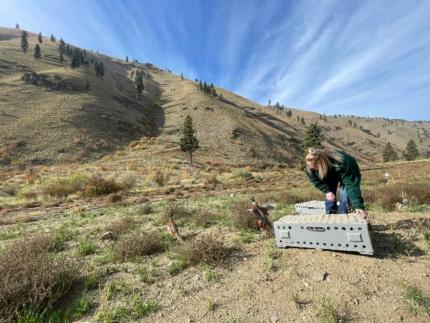
Forest Grouse: Biologists Jeffreys and Eilers collected grouse wing samples from the four grouse barrels around Chelan County. Hunters use these barrels to deposit one wing and tail of each harvested grouse, which then allows biologists to identify the age and species of harvested grouse and provides a means of monitoring harvest and population trends. The locations of the grouse barrels can be found by clicking this link: Forest grouse wing and tail collection | Washington Department of Fish & Wildlife.
Bighorn Sheep Ground Surveys: Assistant Wildlife Area Manager Pavelchek and Technicians Zabreznik and Schannauer completed ground-based bighorn sheep surveys for the Swakane and Chelan Butte bighorn sheep herds. District Biologists Jeffreys and Eilers will then use this data to monitor these bighorn sheep herds and calculate herd abundance, composition, and sex/age ratios to assist in the conservation and management of these herds.
Bighorn Sheep Mortalities: Within the past month, there have been at least five bighorn sheep ram mortalities and two ewe mortalities from vehicular collisions along Highway 97A, between Wenatchee and Chelan. The majority of mortalities occurred between Rocky Reach Dam and Entiat. Washington Department of Transportation has road-side signs alerting vehicles of high sheep abundance along roads this time of year. Biologists urge drivers to proceed with extra caution along Highway 97A now and throughout the winter.
The skull and horns of the deceased rams were collected and pinned. For each head, biologists recorded horn measurements, estimated age, and performed a nasal swab to monitor for diseases of concern, such as Mycoplasma ovipneumoniae (M. ovi). These ram skulls will be donated to the Wenatchee Sportsman’s Association, where they will be auctioned to the public. The proceeds from this auction will be used for conservation of Washington bighorn sheep.


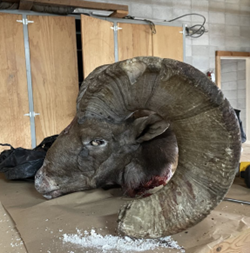
Deer Management: Biologist Dougherty and Clements have completed their aerial surveys for Game Management Unit (GMU) 290 and are now gearing up to conduct additional aerial surveys along areas of the Columbia Plateau. Biologists surveyed 40 units in GMU 290 and observed over 380 deer across the units.
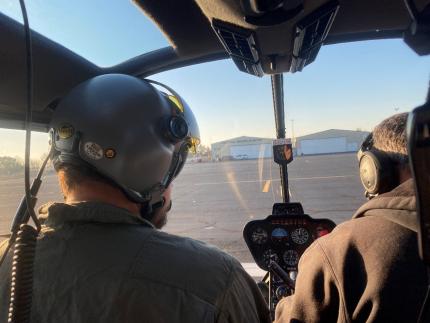
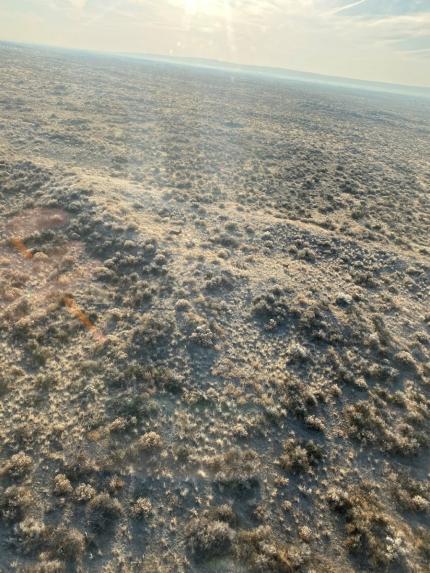
Waterfowl: Biologists Dougherty, Clements, and Nason have been seeing several swans across Grant and Adams counties. Clements has sent out a public service anouncement to appropriate agency personnel and collaborated with volunteers and other organizations to report swan sightings. The data collected will be used for surveying. The first sighting compiled a total of 167 adult trumpeter swans and ten juveniles in one pond! Several swans have been seen along lower Crab Creek, along the Frenchman Reserve, various unnamed ponds throughout the potholes, Moses Lake, and even Lake Lenore.
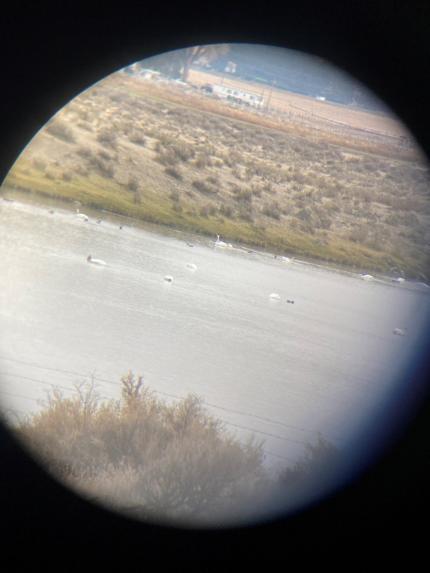
Upland Hunting: Biologists Clements and Nason have assisted in releasing pheasants at Steamboat Rock State Park and Dry Falls sites. District staff members will be conducting one final round of pheasant releases in Grant and Adams counties for the year.
Trapped, Sick and Injured Wildlife: Biologist Clements received a report of a deer that got stuck in a canal. Agency staff members are not allowed to conduct any work regarding the irrigation canals until all of the water has has been drained and has complied with Columbia Basin Irrigation District’s lock out policy once water drainage has been completed.
Providing Recreation Opportunities
Frenchman Regulated Access Area Blind: There are a few wetland cells that are hard for hunters to utilize without providing their own blind. We wanted to explore the prospect of having the Washington Conservation Corp crew build a few blinds to provide hunting opportunity. The crew did a great job of building and concealing the first blind at Cell 1.
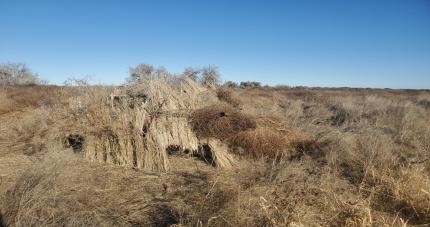
Pheasant Release: Wildlife area and district staff members released 66 crates of pheasants across five wildlife area pheasant release sites. Hunters were enthusiastically waiting for staff members to arrive with birds and were very appreciative of the program.
Hunter Communication: Specialist Heilhecker spoke to a hunter looking for places to find elk.
Providing Conflict Prevention and Education
Frenchman Dodson Road Fence Damage: Biologist McPherson and Specialist Walker found large amount of fence damage at Frenchman Wasteway of Dodson Road. Damaged materials were hauled off and Biologist McPherson coordinated with Washington Conservation Corp crew to repair fence to prevent more damage to the area.
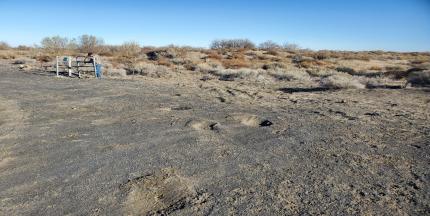
Winchester Reserve Posting: While Biologist McPherson was conducting a grazing evaluation, he took the opportunity to check and post parts of the Winchester Reserve. Boundaries are signed and there should not be any issues with people mistakenly entering the reserve.
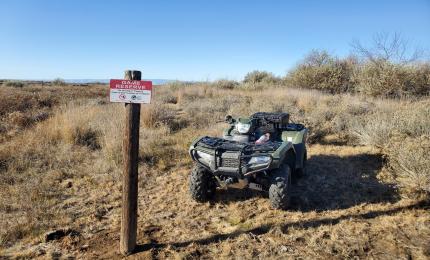
Responding to a Bear Call: Specialist Heilhecker spoke to a homeowner who reported a bear in garbage. Five weeks ago, the bear got into the reporting party’s garbage. The bear returned four weeks ago and got into garbage again in addition to eating the chicken feed. Recently, the bear killed a chicken and got into the garbage again. The reporting party planned to take their garbage to the landfill the following day. They asked about relocating the bear. Specialist Heilhecker advised the reporting party to secure all attractants. If law enforcement deemed it necessary, the bear would be trapped and then killed but relocation was not an option this time of year. The reporting party stated he had a bear archery tag. The reporting party was also advised he could harvest the bear but to report the bear harvest within 24 hours to law enforcement.
Cougar Kittens Report: Specialist Heilhecker received a report of two cougar kittens. The reporting party saw the kittens while hunting opening weekend of the general deer season. The photo of the animals was taken in GMU 204.
Responding to Report of Road Killed Wolf: Specialist Heilhecker received three reports of road-killed wolves. The first report along Highway 97 was reported as a possible wolf. The reporting party did not know if it was a dog or a wolf. Specialist Heilhecker and a Washington Department of Fish and Wildlife (WDFW) officer looked for the animal but were unable to locate it. The other two reports turned out to be same wolf on Highway 153 even though the locations reported were four miles apart. A WDFW officer was able to locate the animal. The U.S. Fish and Wildlife Service was notified.
Cost Share Fencing: Specialist Heilhecker spoke to an orchardist regarding the status of the cost-share fencing program. At the time of the call, Specialist Heilhecker could provide no updates. The cost-share fencing agreement template was not finished and the budget status is unknown.
Conserving Natural Landscapes
End of Season Grazing Evaluation: Biologist McPherson started end of season grazing evaluations to ensure that grazing goals were achieved. All leases look good and meet objectives. One new tool used to evaluate grazing was the use of drones. Biologist McPherson felt that aerial images really illustrate landscape use and how grazing is beneficial to habitat and wildlife.
Native Grass Seeding Circle Corner: Biologist Cook and Technician Blanchard planted a 3.5-acre circle corner with native perennial grasses near Quincy Lakes Unit. The Private Lands no-till seed drill was used for planting the bulk of the area. They seeded the edges and some rocky parts using a broadcast seeder. Another seeding was attempted earlier this spring but was unsuccessful. Different seeding equipment was used this fall and should help with better establishment. Broadleaf weed control will be completed next spring and summer to improve native grass establishment. The Columbia Basin chapter of Pheasants Forever provided funding for native seed this fall.
Native Tree and Shrub Planting: Biologist Cook and Technician Blanchard helped Biologist Braaten with native tree and shrub planting, including plastic mulch laying along the tree/shrub rows. The planting occurred over two days and used the Private Lands tree planter and plastic mulch layer.

Post-wildfire Seeding on the Ellemeham Mountain Unit: Scotch Creek Wildlife Area Manager Dupont and Assistant Manager Stanley planned and implemented an 835-acre aerial seeding effort on the Ellemeham Mountain Unit impacted by the Eagle Bluff fire this past summer. Scotch Creek contracted Central Valley Helicopters out of Ellensburg to complete the two-day operation. Crews seeded 457 acres on the Ellemeham Mountain Unit and an additional 378 acres of adjacent Bureau of Land Management lands funded via Good Neighbor Authority agreement. Flying the mix of native bunchgrasses before the winter snows will increase germination success and help those grasses compete with non-native annuals like cheatgrass.
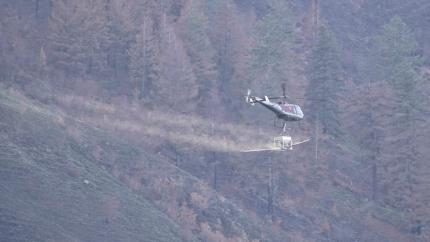
Managing Wildlife Populations
Oak Creek Wildlife Area Elk Feeding Operations: The Oak Creek Wildlife Area is preparing for winter elk feeding activities. Supplemental feed and alfalfa were delivered to the Cowiche Unit feeding area in anticipation of winter weather and elk movement into lower elevations.
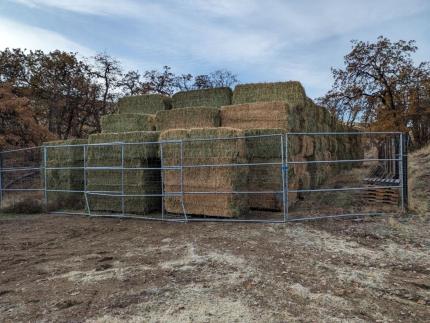
Region 3 Sage Grouse Working Group: Region 3 Wildlife Biologists Fidorra, Wampole, and Moore, and other state staff members met in Ellensburg for the annual Sage and Sharp-tailed Grouse Working Group meeting. Populations are at a historic low. Data on genetics, translocations, fire, funding opportunities, and restoration progress were discussed.
District 8 Grouse Harvest Monitoring: District 8 Biologists Wampole and Moore continue to check and collect wings from the four grouse wing barrels within the district. The Washington Department of Fish and Wildlife (WDFW) collects wings and tails of hunter-harvested forest grouse (spruce, ruffed, dusky, and sooty species) from Sept. 15 through Jan. 15.
The goal of this collection effort is to build estimated population trend datasets for each species to evaluate harvest changes. Other factors will also be evaluated, including wildfire and weather patterns that may contribute to changes in harvest and overall populations at the species level. Grouse hunters can help our monitoring efforts by depositing one wing and the tail of each grouse that they harvest into wing collection barrels placed around the state or by bringing them to the closest WDFW district or regional office. More information about these efforts and specific barrel locations can be found online.
District 8 Wildlife Camera-trapping: District 8 Wildlife Biologists Wampole and Moore spent several days in the field deploying trail cameras to survey wildlife distributions, abundance, and behavior.
Providing Recreation Opportunities
Wenas Wildlife Area Mountain Biking Coordination: Wenas Wildlife Area Manager Hughes met with the president of the Kittitas County Evergreen Mountain Bike Alliance to discuss the agency's overall plan for recreational management. Hughes has fostered an effective working relationship with the local chapter throughout the past couple of years. The chapter will be doing volunteer work on approved trails this spring for routine maintenance.
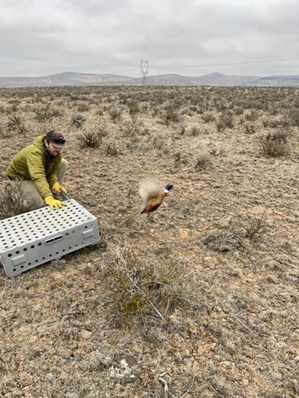
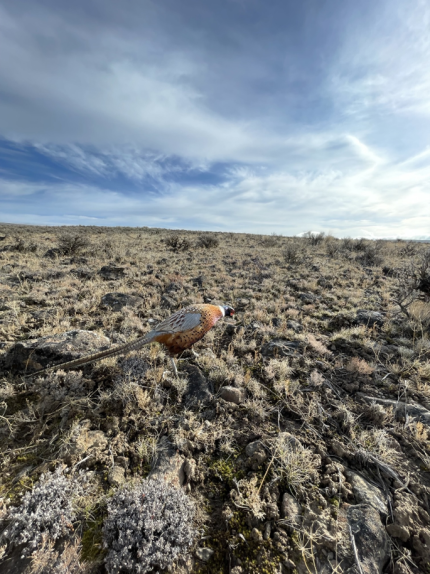
New Colockum Sno-Park: Colockum Wildlife Area Manager Lopushinsky and Assistant Manager Hagan worked to create a new winter non-motorized sno-park at the Orr Creek Road Junction. This concept was developed in the Naneum Ridge to Columbia River Recreation Plan, as well as in the subsequent Stemilt-Squilchuck Recreation Plan. Colockum Wildlife Area staff members purchased and installed a new vehicle gate and leveled a space for vehicle parking. A local backcountry ski and snowshoe group is working to build a kiosk to post new signage.
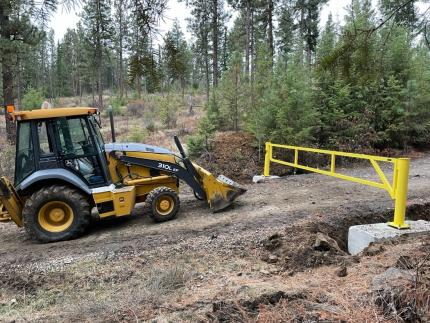
District 4 Pheasant Releases: District 4 Wildlife Biologist Fidorra and Natural Resource Technician Manderbach released pheasants at U.S. Army Corp of Engineers and WDFW properties in Franklin County. The roosters from WDFW’s Bob Oake Game Farm arrived on time and were in great condition as usual!
Annual Big Game Season Setting Adjustments: District 4 Wildlife Biologist Fidorra submitted minor date changes for deer and elk permits for the 2024-2025 season. These proposed changes match permits to appropriate hunting seasons or avoid conflict with other hunts.
Providing Conflict Prevention and Education
Wenas Elk Fence Fall Check: All Wenas Wildlife Area staff members participated in the fall elk fence check of 49 miles of fence. They started out on steep areas that need to be hiked into before poor weather arrived. A majority of the elk fence has been checked and the remaining fencing will be checked throughout the rest of November.
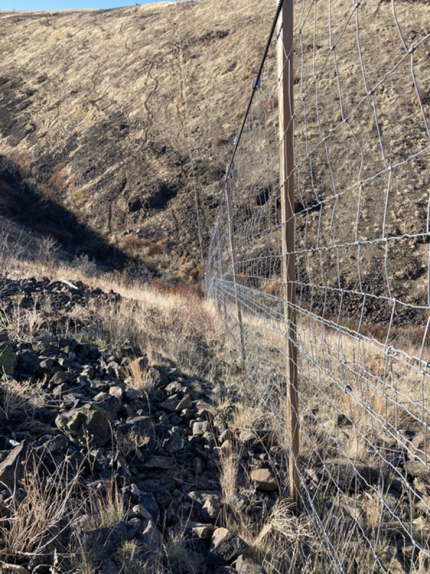
Conserving Natural Landscapes
Teanaway Valley Unit Planting: L.T. Murray Wildlife Area staff members monitored work during the week of Oct. 30, as a contract planting crew from Ash Creek Forest Management planted 3,200 ponderosa pine saplings in the Teanaway Valley Unit lower meadow area to increase vegetation biomass and shade for the Teanaway River to improve water quality.

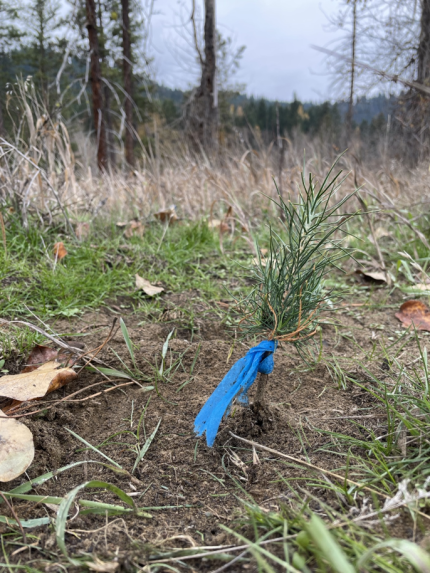
L.T. Murray Vantage Fire Restoration Planting: During the weeks of Oct. 30 and Nov. 6, members of the L.T. Murray crew and Washington Conservation Corp planted roughly 11,200 big sagebrush, rabbitbrush, and bitterbrush plugs in the Phase 1 restoration area within the 2022 Vantage fire scar (near the Pumphouse Road entrance area). They completed the work with the help from Stelle Cultural Resource Group. We are excited to complete Phase 1 and are motivated to move forward with the remaining three phases of restoration of the amazing sagebrush steppe habitat on the Whiskey Dick and Quilomene units!
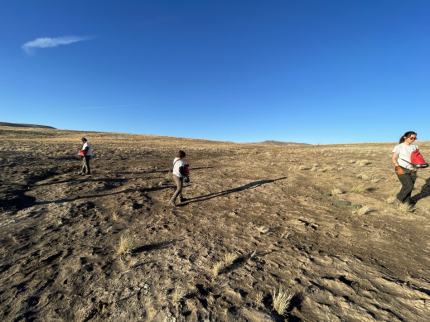
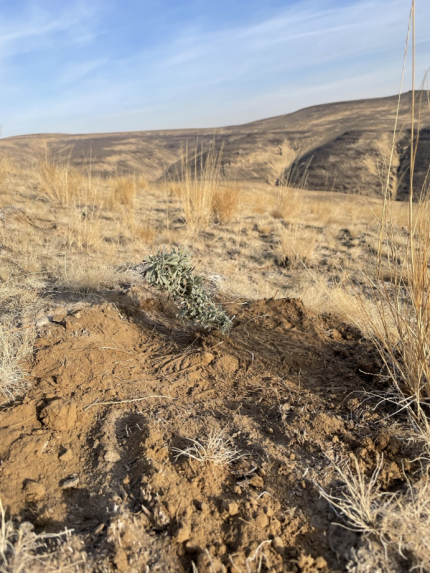
Wenas Bull Pasture Restoration: Staff members from the Wenas Wildlife Area are restoring approximately 130 acres off Bull Pasture Road into native grass seed. This site has been chemically fallowed for two years to prep the bed prior to seeding and to gain better control of the cheatgrass and bulbous infestation. Natural Resource Technician Trahern and Assistant Manager Taylor started harrowing and seeding the Bull Pasture area rehab.
Wenas Tree and Shrub Planting: Wenas Wildlife Area Habitat Specialist Miller, Natural Resource Technicians Janes and Stoltenow with the help of a Washington Conservation Corp crew from Wenatchee, finished up the planting of approximately 15,000 shrub plugs on various sites around the wildlife area. These shrubs are planted in areas that have had previous disturbances and the plugs should give recovery a head start.
Sunnyside/Snake River Byron Fire Restoration: Sunnyside/Snake River Wildlife Area Manager Kaelber, Assistant Manager Jahns, and Natural Resource Technician Manderbach picked up 2,000 shrubs from Plants of the Wild Nursery in Tekoa and delivered them to a staging area in the Byron Unit where they will be planted in the coming weeks. The shrub planting is part of ongoing post-fire restoration efforts following last year’s wildfire. Sagebrush and a variety of riparian shrub species will be planted throughout the unit.
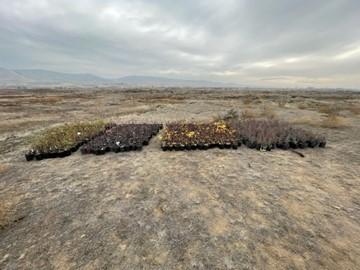
Providing Education and Outreach
Oak Creek Wildlife Area Community Service Project: A group of Naches Valley High School seniors helped Oak Creek Wildlife Area Assistant Manager Charlet prepare the Cowiche Unit elk feeding site for upcoming winter feeding. Students collected baling twine pieces and garbage from the feed site to reduce the risk of elk consuming garbage during winter feeding.
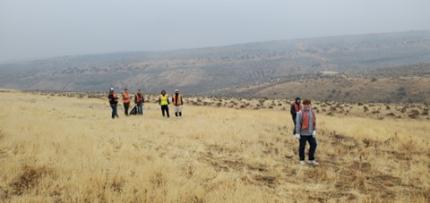
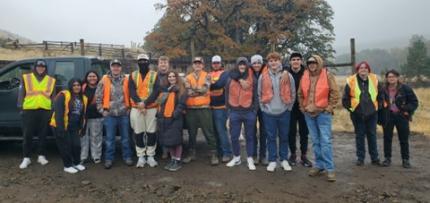
Oak Creek Wildlife Area Winter Feeding Signs: The Oak Creek Wildlife Area staff members collaborated with Naches Valley High School students and Shop Teacher Worby to produce new elk feeding area signage. Naches students produced 16 new bilingual signs to provide information to Oak Creek Wildlife Area visitors.
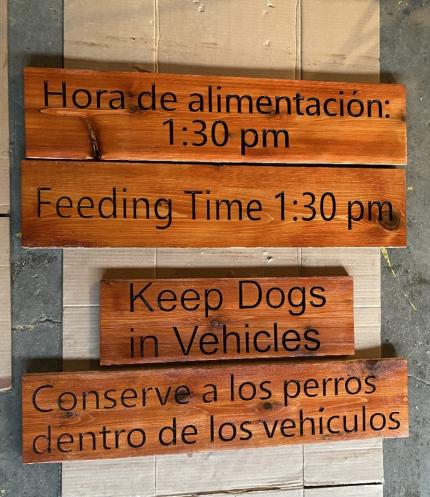
Kittitas Environmental Education Network (KEEN) Meeting: Wenas Wildlife Area Manager Hughes and Wenas Habitat Specialist Miller participated in a workshop put on by the Kittitas Environmental Network. The workshop focused on management in the Yakima River Canyon. Representatives from different agencies, recreational user groups, and local neighbors were present. Hughes and Miller presented a talk on habitat work done by WDFW within the Yakima River Canyon and discussed plans for future restoration efforts.
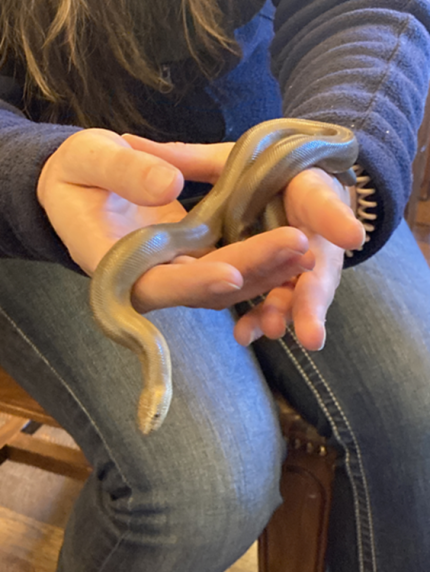
Conducting Business Operations and Policy
New Region 3 Private Lands Biologist Hired: District 4 Wildlife Biologist Fidorra and a panel of Private Lands and Wildlife Program staff members conducted interviews for the vacant Regional Private Lands Biologist position. An offer was made to the top candidate who accepted the position and will be starting Dec. 1.
Other
Sunnyside/Snake River Byron Pipe Project: Sunnyside/Snake River Wildlife Area staff members were pleased to see the pipe project at Byron Unit was near completion. Contractors have been working the last two months to replace infrastructure that was lost in last year’s wildfire. Once completed, water will be pumped into the network of small wetlands within the unit, providing habitat for migrating waterfowl.
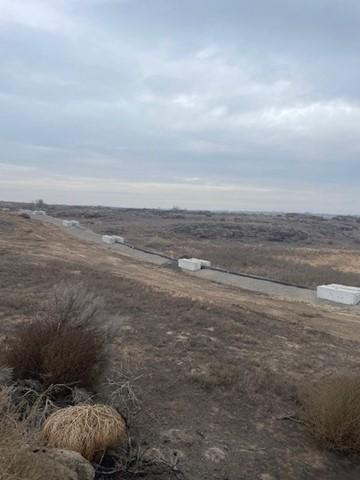
Managing Wildlife Populations
Goose Surveys: Biologists Holman, Stephens, and Wickhem continued the twice-monthly goose surveys in Clark, Cowlitz, and Wahkiakum counties. Dusky Canada geese are the focus of this effort, but all species encountered are counted and documented. Dusky geese are a sub-species of Canada goose that spend summers in Alaska and migrate through and overwinter in southwest Washington and northwest Oregon. Duskys are closed to recreational harvest due to low population levels. The purpose of the surveys is to count dusky geese observed and read alphanumeric codes on any red-collared duskys. These data are submitted to U.S. Fish and Wildlife Service and are used to develop an annual survival estimate for the dusky geese. Wickhem recorded 17 duskys within a flock with cackling Canada geese on this survey.
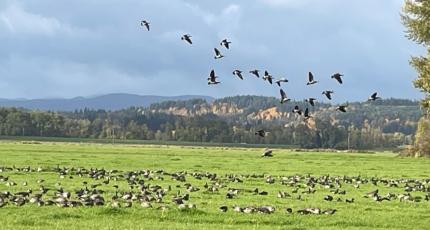

Klickitat Mule Deer Mortality Investigations: Biologist Wickhem investigated three mortality (death) signals from collared female mule deer in the first two weeks of November, two of which were in one day. Wildlife Conflict Specialist Jacobsen assisted in one of the investigations as well, which required a lengthy necropsy (wildlife autopsy). The first deer was likely killed by coyotes but had been aggressively scavenged by the time Wickhem arrived, so it wasn’t possible to tell for sure.
The second deer was completely intact when Wickhem arrived. The carcass was found approximately 250 yards from a highway and after skinning a portion of the carcass, extensive trauma and internal bleeding were observed. Wickhem determined the doe died after getting hit by a vehicle.
The final deer was also intact when Wickhem and Jacobsen arrived but showed signs of bloody diarrhea. During the necropsy the pair found discolored organs and blood in the intestines and body cavity. After consulting with an agency veterinarian, it was determined she likely died from a hemorrhagic disease, but not adenovirus hemorrhagic disease which has been documented in Klickitat County in 2017 and 2022.
These deer are part of a 4-year study being conducted throughout (Game Management Units) GMUs 388 and 382 to track the annual movements of female mule deer and locate important migration corridors. Staff members are also attempting to determine cause of death when an animal dies, which has proven to be difficult. In winter 2021, 81 collars were deployed throughout the GMUs for this effort. Twenty-two collars were deployed in the winter of 2022. Twenty-three collars were deployed in the winter of 2023. Most of the collars deployed in 2023 were redeployments replacing study deer that died over the first two years of the study. We are nearing the end of the study so these collars will not be redeployed for this project.
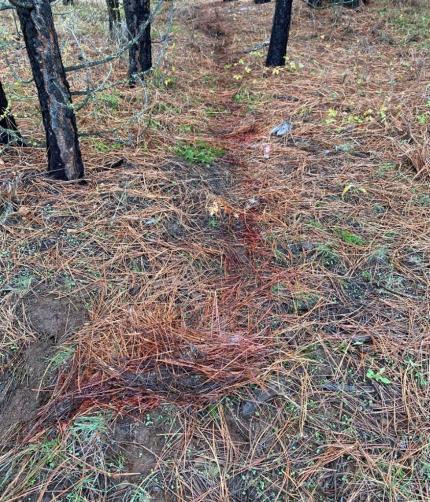
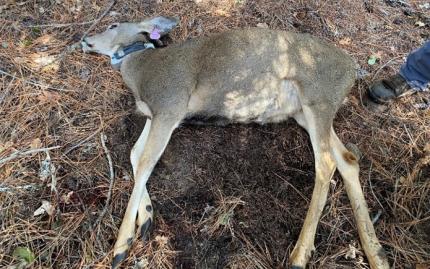
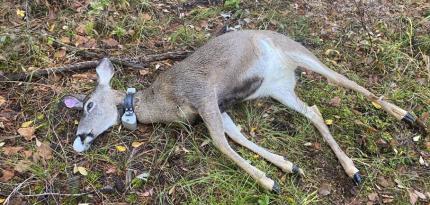
Providing Recreation Opportunities
Hunter Harvest Checks: Regional wildlife biologists, wildlife conflict specialists, and customer service specialists continue to complete checks of hunter harvested wildlife. Many species of wildlife including cougars, bobcats, bears, bighorn sheep, and mountain goats have checking requirements to facilitate biological sample collection and assure the legality of harvests. Hunters are reminded to check the Big Game Seasons Pamphlet in order to be clear on checking requirements for various species. Recent checks have included several sets of elk hooves and a handful of cougars.
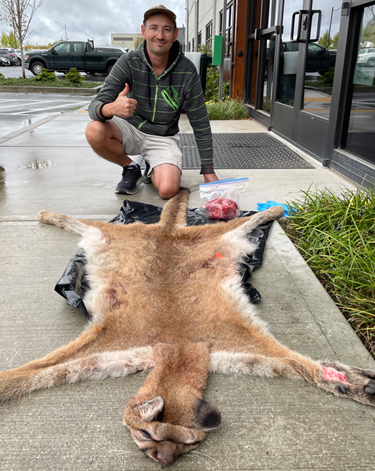
Conserving Natural Landscapes
Switching It Up: When the first hard frost arrives, wildlife area staff members are finally given a reprieve from the intense weed control activities that dominate much of their time during the spring, summer, and fall. On the Mt. St. Helens Wildlife Area, the first frost arrived at the beginning of November. There are still some weed control activities that will happen, but the winter season is a great time for wildlife area staff members to catch up on maintenance activities, survey for migrating waterfowl, document winter movements of elk, replace and update signage, and tackle data reporting. There is nothing that makes a wildlife area manager, or assistant manager miss the weed season like a few hours in front of their computer.
Assistant Manager Risley visited multiple sites around the Mudflow Unit to replace signage. Risley ran into Washington Department of Fish and Wildlife (WDFW) Fish Program staff members releasing 15 adult coho salmon into Bear Creek on the Mudflow Unit. Since migratory fish are unable to access the upper reaches of the North Fork Toutle River and its tributaries, WDFW captures and transports adult coho salmon and steelhead to both Bear Creek and Alder Creek to spawn naturally and perpetuate these native runs.

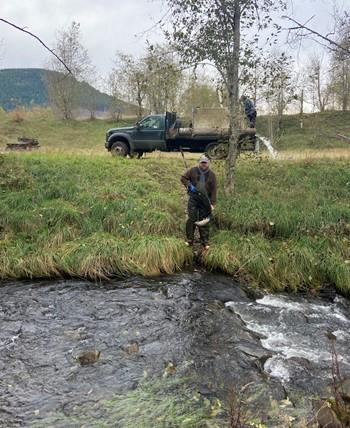
Providing Education and Outreach
Industrial Timberland Access: Private Lands Biologist Gray was interviewed by the Columbia Insight magazine to learn more information about private industrial timberlands in southwest Washington and issues associated with allowing public access. The picture below shows one of the unfortunate realities many timber companies face. One of the benefits of enrollment into the WDFW Private Lands Access Program is financial assistance and coordination to help private timberlands clean up garbage dumping on their lands. WDFW is currently seeking private timberlands and small forest landowners to enroll in the access program to assist these landowners in providing free public access.
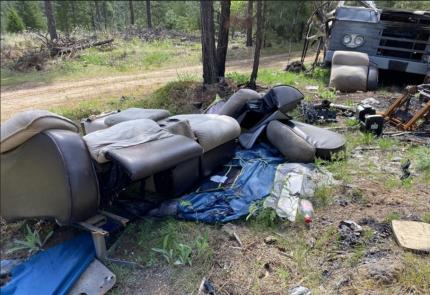
Managing Wildlife Populations
Grouse Wing/Tail Collection Barrels: Biologist Murphie has collected 24 samples from the Mill 5 and George Adams barrels deposited by hunters since the grouse season opened on Sept. 15. Biologist Cent also continues to collect wing and tail samples collected by grouse hunters.
Sooty Grouse Survey Routes: In preparation for the next sooty grouse survey season, Biologist Murphie established survey routes in (Game Management Units) GMUs 621, 636, and 651. Biologist Cent also finalized routes for the upcoming sooty grouse surveys.
Elk Season Opener: Biologist Novack worked the modern firearm elk season opener in GMU 672. Morning weather was abysmal with high winds and hard rain. There were no harvests reported nor seen by those contacted.
Westside Deer and Elk Management: Biologists Butler and Tirhi met with other biologists, managers, and research staff members involved with managing westside deer and elk populations. This coordination meeting began with a discussion covering current management and monitoring methods for black-tailed deer and the western Washington elk herds. The meeting’s goal was to discuss current and future monitoring priorities and begin to strategize monitoring and management needs relative to cost for western Washington black-tailed deer and elk herds. Additional meetings will follow.
Dusky Canada Goose Surveys: Biologist Cent and Novack conducted dusky goose surveys. Limited numbers of dusky Canada geese were seen.
Presumed Avian Influenza in Geese: Biologist Cent visited a property near Elma and observed about 100 dead and dying cacklers. Additional reports of dead and dying cacklers were reported within a few miles of this location.
Game Management Plan and Three-Year Season Setting: Biologist Murphie has participated in several meetings and discussions related to Game Management Plan (GMU) revisions and three-year season setting work.
Mazama Pocket Gopher: Biologists Butler, Tirhi, Cent, and Rolls, other Washington Department of Fish and Wildlife (WDFW) staff members, and trained volunteers finished the 2023 Mazama pocket gopher survey effort this past week. The Mazama pocket gopher was listed as state threatened and the sub-species within Pierce and Thurston counties were listed as federally threatened with loss of habitat being a main driver of its decline.
This year’s survey efforts focused on measuring the abundance of gophers at known locations using a relatively new survey method. This method involved biologists collecting the locations of all fresh mounds along set transects, which a model then uses to estimate gopher abundance. The field data collected this year is awaiting analysis. Biologist Murphie also participated in a pocket gopher survey training activity.
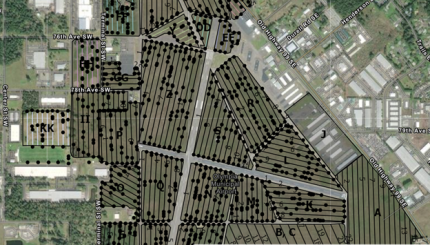
Fisher Study: Biologists Butler and Tirhi assisted District 13 staff members deploying a fisher scent station in Snohomish County this past week. Fishers are a member of the weasel family native to Washington’s forests. Due to over-trapping and habitat loss, fisher populations declined, and the species was listed as endangered by Washington State in 1998. In response, a fisher reintroduction project was established across the Olympic Peninsula and then the Cascade Mountain Range which released 279 fishers from Canada into Washington from 2008 to 2021. This year fisher scent stations were set up across the northern Cascades to monitor the distribution of fishers. The scent stations were set up in the fall with a trail camera and left over winter in hopes of attracting a fisher.
Providing Recreation Opportunities
Processing Harvested Game and Hunter Outreach: Biologist Tirhi processed six bobcats, three cougar, and one bear in early November.
Biologist Tirhi assisted eight hunters by advising them on hunting access and opportunities in District 11. Tirhi provided them with maps and hunting prospects.
Conserving Natural Landscapes
Protection Island Fieldwork: Technicians Magliaro, Martinez, and Norris, Wildlife Area Manager Laushman, and Research Biologist Pearson visited the Zella Schulz Unit of the North Olympic Wildlife Area on Protection Island. They treated invasive weeds, seeded native plants, and transplanted native dune grass to previously burned areas of the island utilized by rhinoceros auklets.
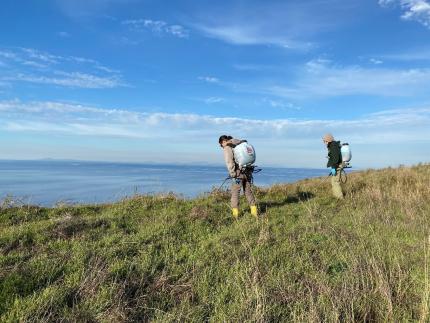
Elk River Unit Wetland: Biologist Novack and Cent worked with Lands Division staff members to initiate restoration of a wetland portion of the Elk River Unit. Willow stakes are being planted in an area dominated by reed canary grass.
Oregon Spotted Frog: Biologist Tirhi worked with WDFW Fish and Habitat Program staff members, Aquatic Species Restoration Plan (ASRP) advisors, and Wild Fish Conservancy NW to draft the first step of an ASRP funding request for the construction of two ponds at the Mima Creek Unit, Oregon spotted frog breeding site.
The project will include a hydrologic connector in a deep water Mima Creek tributary that will have the ability to control the water level in the ponds via a manual gate. Phase 2 will also include the installation of beaver dam analogs at two locations on Mima Creek. The $126K request thru ASRP will pay for the cultural review, permitting, engineering staff members time, and overhead to enable Phase 3, and build.
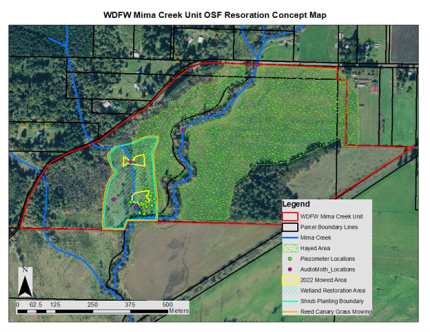
Bats: Biologist Tirhi met with Western State Hospital and their construction engineering consultants to further discuss a project on the hospital campus to demolish several buildings, one of which is occupied by a maternity colony of bats. Tirhi and the team met earlier in the year for WDFW consultation.
This meeting was to discuss the possibility that the demolition may be delayed and thus overlap the breeding season when bats have returned and are already in the building (and prepare contingency plans). Unfortunately, bat colonies within structures occupied by people or in the vicinity of people do not have the same legal protections as those elsewhere. With that, Tirhi only advised how to avoid impact to the colony if the project is delayed. This included opening up the structure at the colony site to expose the bats to light and cold and thereby entice the bats to leave before they begin bearing pups.
Providing Education and Outreach
Discovery Bay Field Trip: Wildlife Area Manager Laushman and Regional Communications Specialist Mire visited a middle school field trip at the Discovery Bay Unit. North Olympic Salmon Coalition staff members and volunteers taught seventh graders about healthy stream habitat and helped students create restoration plans for upcoming tree plantings at the unit.

General Wildlife Inquiries: Biologist Murphie responded to inquiries received by phone, email, and in person related to duck hunting, elk hunting, western pond turtles, deer, pig, bobcat sealing, and osprey nest removals.
District 11 Drone Project: Biologist Tirhi was approached by a University of Washington Tacoma senior computer programming team with a request to work with District11 on a drone project within the district. Tirhi met with the WDFW Drone Lead Jansen and the computer programing teams to brainstorm potential project ideas, including pond turtle, deer, and spotted frog monitoring. There will be more information to come.
Other
Department of Natural Resources (DNR) Gate in Capital Forest: Biologist Novack found a DNR gate in Capitol Forest had been torn out, presumably during the modern firearm deer season. A note was sent to DNR enforcement staff members.